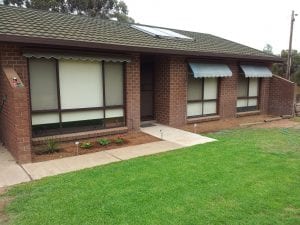ETL401 Assessment Item 3: Part C – Reflective Practice
Provide a critical reflection of how your understanding of Information Literacy (IL), IL models and the TL role in inquiry learning has expanded through this subject.
At the end of Week 2, I completed my first reflective blog post for ETL401, talking about the role of a Teacher Librarian (TL) based on my teaching experiences. In the final paragraph, I mentioned that beyond the two main facets I had spoken about in depth, TL’s manage the physical library space, teach students to be library, ICT and information literate, manage Book Week celebrations and/or events and keep themselves and other staff up-to-date with the publishing industry, technology, current teaching pedagogies and the curriculum. So, even at this early stage of the subject I knew that teaching information literacy (IL) was part of the TL’s role, but I didn’t know a great deal about IL as a concept.
To unpack IL as a concept, I first drew upon my knowledge of information from module two. Although there is no widely accepted definition of information (Case, 2006, p. 61), I demonstrated my understanding in Forum 2.1 (Thinking About Information) that there are different types of knowledge and information, and that the four properties of information – inconsumable, untransferable, indivisible and accumulative – have a profound effect on how we learn and communicate. I also discussed the data-knowledge continuum, which I can now see has influenced the structure of IL models.
Next, following the course material in module five, I began to consider the nature of the term literacy. I attempted to come up with a simple definition in my blog post, Definitions of Literacy, to capture the traditional skills – reading, writing, listening, speaking, viewing, and understanding – as well as the situation and application of those skills. However, UNESCO (2006, p. 148) highlighted another two ways of seeing literacy: as a learning process and as text. As such, I don’t know if my definition does justice, especially when you consider, in addition, Functions of Meaning or multiliteracies (Kalantzis & Cope, 2015). Clearly, the concept of literacy is just as complex as information, so when you put the two together, the complexity increases twofold!
There are many definitions of IL (CILIP Information Literacy Group, n.d.). As the information landscape changes, so to will the definitions change (Fitzgerald, 2015, p. 17) since the concept is tied to its context. In one blog post, I highlighted one of my favourite quotes taken from the course material, and thought about it in relation to my fourth-year university practicum. It clarified the important shift from IL as a set of skills and behaviours, to sociocultural construction of information and meaning, and whole body engagement with a range of modes. It also helped me to understand the importance of authentic learning experiences.
By engaging with this modality of information, novices learn to act as practitioners, but they cannot become practitioners because they are removed from the reflexive and reflective embodied experiences and tensions arising from practice.”
– Lloyd, 2007
As I moved through the fifth module, I couldn’t think of a time when I had actually used inquiry learning. Most of my teaching experience is as a TRT, so, of course, inquiry learning is not an option. Then I remembered using Primary Connections during my very first year, which I spoke about in Forum 5.3a (Information Literacy Model). The program, developed by the Australian Academy of Science, uses the 5Es – engage, explore, explain, elaborate, evaluate (Australian Academy of Science, 2019). Though this is not an IL model itself, the elements of an IL model, such as the Information Search Process, Big6, or I-LEARN could be easily integrated with it.
So, how has my understanding of the TL’s role developed through the subject? Here, I’d like to refer back to my original statement on the role of a TL. I said that one aspect of the role was to teach students to be library, ICT and information literate. This is true, of course, but if I rewrote my statement, I would expand on this element of the role, and include more about collaboration.
Without IL, the Teacher Librarian is just a Librarian! IL and inquiry learning is where the TL and classroom teacher come together as the ultimate partnership. The classroom teacher brings content knowledge and the TL brings knowledge of IL, ICT, Creative and Critical Thinking, and Literacy capabilities together to create authentic learning experiences and develop 21st-century skills. For this to happen, effective collaboration is critical. In one blog post, I considered Gibson-Langford’s guiding principles for building collaborative relationships (2008, p. 34). I have bookmarked these for the future.
References
Australian Academy of Science. (2019). 5Es teaching and learning model. Retrieved from https://primaryconnections.org.au/node/262
Case, D.O. (2006). Looking for information: A survey of research on information seeking, needs and behaviour (2nd ed.). Burlingham: Emerald Publishing Limited
CILIP Information Literacy Group. (n.d.). Definitions & models – information literacy website. Retrieved from https://infolit.org.uk/definitions-models/
Fitzgerald, L. (2015). Guided inquiry in practice. Scan, 34(4), 16-27. Retrieved from https://education.nsw.gov.au/teaching-and-learning/professional-learning/scan
Gibson-Langford, L. (2008). Collaboration: Force or forced, part 2. Scan, 27(1), 31-37. Retrieved from https://search-informit-com-au.ezproxy.csu.edu.au/fullText;dn=166077;res=AEIPT
Kalantzis, M., & Cope, B. (2015). Multiliteracies: Expanding the scope of literacy pedagogy. New Learning. Retrieved from http://newlearningonline.com/multiliteracies
Lloyd, A. (2007). Recasting information literacy as sociocultural practice: Implications for library and information science researchers. Information Research, 12(4).
UNESCO. (2006). Education for all: Literacy for life. EFA global monitoring report, 2006. Paris, France: UNESCO Publishing

